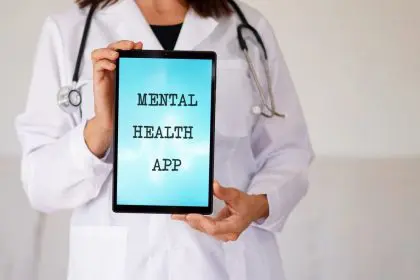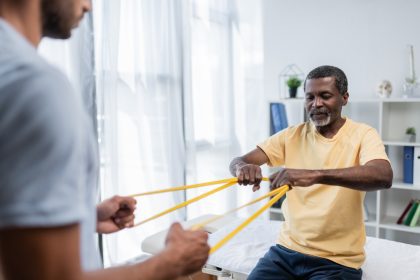Living with chronic pain is a challenge affecting millions of people daily. From back pain to arthritis, fibromyalgia to migraines, finding relief often requires a multifaceted approach. One of the biggest concerns when managing chronic pain is the risk of addiction to prescription medications. While pain relief is essential for quality of life, the potential for addiction should not be overlooked.
This article explores five key strategies to help you avoid addiction when dealing with chronic pain. These methods focus on safe and effective pain management while minimizing the risk of becoming dependent on medications.
1. Communicate with your health care provider about non-addictive treatments
One of the best ways to avoid addiction when dealing with chronic pain is to maintain open communication with your health care provider. Not every chronic pain situation requires strong opioids or habit-forming medications.
Today, many non-addictive treatment options are available, ranging from non-steroidal anti-inflammatory drugs (NSAIDs) to physical therapy, acupuncture, and certain forms of exercise. By having regular conversations with your doctor, you can explore these options and find treatments that are effective without the risk of addiction.
Explore alternative treatments
Your health care provider may suggest alternative treatments such as massage therapy, cognitive behavioral therapy (CBT), or meditation. These approaches aim to reduce your reliance on medication by addressing the pain in different ways. Trusting and collaborating with your doctor will guide you toward safer pain management techniques.
2. Set realistic goals for pain management
The goal of pain management should not be the complete elimination of pain but rather reducing it to a manageable level. Many people fall into the trap of overusing medication when they expect to feel zero pain. This can lead to taking higher doses of medication than necessary, increasing the risk of addiction.
Focus on pain reduction, not elimination
Work with your doctor to set achievable goals for your pain management plan. Perhaps it’s bringing the pain down to a 3 or 4 on a 10-point scale, rather than seeking total relief. By setting realistic expectations, you avoid over-relying on potentially addictive medications.
This mindset shift helps you see improvements and progress in your health without resorting to harmful doses of medication.
3. Monitor your medication use closely
When it comes to prescription painkillers, it’s crucial to stay vigilant. Keeping track of how much medication you take and for how long is critical to avoiding addiction. Your doctor should prescribe the lowest effective dose for the shortest time, but it’s also your responsibility to monitor your intake.
Create a medication plan with your health care team
Set a strict schedule with your doctor regarding when and how much medication to take. This prevents you from developing bad habits like taking more than prescribed or using medication for reasons other than pain relief. If you notice you’re starting to depend on the medication or if it’s no longer effective, speak with your doctor about adjusting the dosage or exploring alternative therapies.
Journaling your pain levels and medication use helps you stay on track and provides a clear record for your health care provider during check-ins.
4. Incorporate physical therapy and exercise
Exercise and physical therapy are often overlooked as powerful tools in managing chronic pain. These activities help strengthen muscles, improve flexibility, and reduce the intensity of chronic pain over time. They also offer the added benefit of improving mental health, which can be crucial when dealing with long-term discomfort.
Strengthen your body to combat pain naturally
Working with a physical therapist introduces you to exercises specifically designed to address your pain points. By strengthening the body, you can reduce the need for pain medications. Studies show that regular physical activity releases endorphins, which act as natural pain relievers.
Even moderate exercise, like walking or swimming, can make a difference. While exercise might seem daunting when you’re in pain, it can significantly reduce pain severity and reliance on medication over time.
5. Build a support system to keep you accountable
The emotional and mental toll of chronic pain is often underestimated. Pain not only affects your body but also your mindset, mood, and overall quality of life. Having a support system in place helps you avoid isolating yourself and relying on medications as a coping mechanism.
Surround yourself with people who understand your struggle
Whether it’s family, friends, or a support group, having people around who understand your situation can help you manage the emotional aspects of chronic pain. These support systems can remind you to stick to your treatment plan, offer distractions from your pain, and provide comfort when you feel overwhelmed.
In addition, many people dealing with chronic pain find counseling or therapy helpful. Cognitive behavioral therapy (CBT), in particular, can help individuals learn how to change their relationship with pain and develop healthier coping mechanisms.
By addressing both the physical and emotional aspects of chronic pain, you reduce the likelihood of turning to medication as a primary solution.
Conclusion
Chronic pain can feel like an unrelenting burden, but it doesn’t have to lead to addiction. By taking proactive steps such as communicating with your health care provider, setting realistic goals, monitoring your medication, incorporating physical therapy, and building a support system, you can manage your pain without becoming dependent on prescription medications.
Dealing with pain is never easy, but taking control of your treatment plan and focusing on holistic approaches can make all the difference in living a balanced, healthy life.
This story was created using AI technology.















